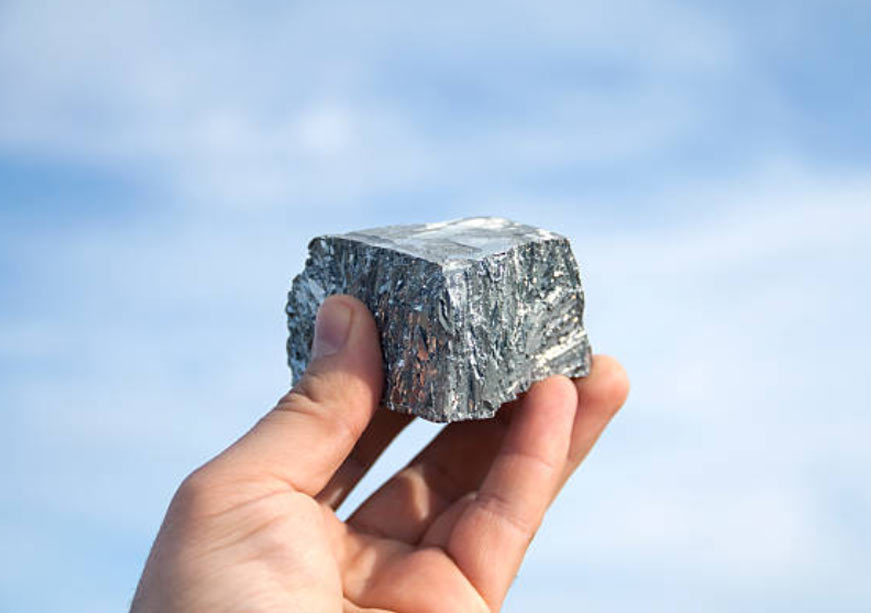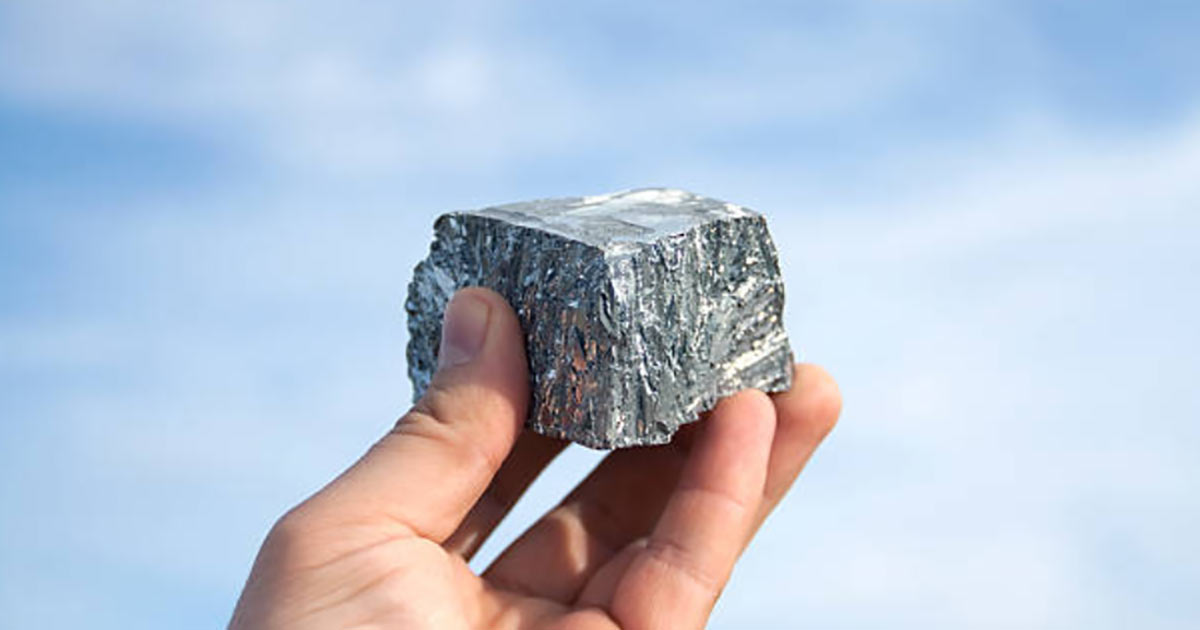
Image Source: Getty Images
This is the 182nd in the ‘China Chronicles’ series.
Washington’s new “foreign entity of concern” rules and CATL’s designation as a “Chinese military company” highlight how US efforts to secure EV supply chains are reshaping clean energy, industrial policy, and geopolitics.
The United States (US)–China rivalry has now moved beyond tariffs and chip bans to critical raw materials (CRMs) that power electric vehicles (EVs), grid storage, and defence industries, turning supply chains into geopolitical terrain.
At the heart of this is lithium batteries, essential for decarbonisation, energy storage, and military technologies. Among battery chemistries, lithium iron phosphate (LFP) has gained prominence for its lower cost and safety, making lithium a strategic lever, rather than a mere commodity. Control over lithium refining and LFP technology will dictate how quickly and affordably the world electrifies.
Moreover, since battery-grade refining and materials determine EV costs and deployment timelines, and with the International Energy Agency (IEA) warning of potential lithium tightness as electrification accelerates, the stakes are exceptionally high. Consequently, for the US, securing these supply chains is about more than industrial growth; it is about energy independence and strategic advantage.
In this context, Contemporary Amperex Technology Co. Limited (CATL), the world’s leading EV battery maker with roughly 38 percent market share, now stands squarely in this crossfire. The Pentagon recently labelled CATL a “Chinese military company”, underscoring how geopolitics is reshaping clean-energy supply chains as Washington walls off sensitive links while sustaining EV momentum. This brief, therefore, examines CATL’s designation and its implications for the company’s US expansion.
US Dependence on Chinese Minerals
China dominates the midstream refining and processing, where prices, quality, and timelines are set, giving it leverage over the US. In batteries, China controls roughly 70–95 percent of global lithium, cobalt, phosphate, and graphite processing capacity, directly shaping availability and costs for battery-grade materials. This includes nearly 80 percent of LFP, two-thirds of nickel-based cathodes, and over 90 percent of graphite anodes, creating single-point sensitivity that turns policy shifts into project delays.
In contrast, the US has limited domestic refining, leaving it heavily reliant on imported battery-grade lithium, graphite, and other critical inputs. To address this, new foreign entity of concern (FEOC) rules aim to reduce strategic exposure to Chinese supply chains.
Rare earths follow a similar pattern, with most refining concentrated in China, reinforcing systemic dependence across motors and advanced electronics. In contrast, the US has limited domestic refining, leaving it heavily reliant on imported battery-grade lithium, graphite, and other critical inputs. To address this, new foreign entity of concern (FEOC) rules aim to reduce strategic exposure to Chinese supply chains.
China has also begun using its dominance as leverage. Recent export licensing requirements on rare earths signalled Beijing’s willingness to weaponise minerals, turning EV supply chains from an industrial challenge into a national security concern.
The tables below outline China’s recent policy actions and the extent of US dependence on these CRMs.
Table 1: China’s Export Control Timeline
Source: Author’s compilation using various sources
Table 2: US Critical Mineral Import Reliance
Source: Author’s compilation using the USGS Mineral Commodity Summaries 2025
CATL’s Position and US Listing
CATL has expanded rapidly across Europe and Asia, supplying major automakers and building large-scale projects in Germany, Hungary, and Indonesia to diversify its market base.
The US Department of Defense (now renamed the Department of War) added CATL to its list of “Chinese military companies,” citing concerns over China’s military-civil fusion strategy. CATL dismissed the designation as “mistaken” and politically motivated.
However, on 7 January 2025, the US Department of Defense (now renamed the Department of War) added CATL to its list of “Chinese military companies,” citing concerns over China’s military-civil fusion strategy. CATL dismissed the designation as “mistaken” and politically motivated.
While the label does not impose a flat ban, it acts as a strong deterrent. It limits defence procurement, triggers heightened scrutiny by the Committee on Foreign Investment in the United States (CFIUS), and discourages US automakers from deepening partnerships. Political backlash is already visible, as Virginia withdrew support for a planned Ford–CATL battery plant in 2023 after national-security concerns mounted, signalling the headwinds CATL faces in the US.
Impact on US Market Entry
The designation has made direct ownership of US facilities politically untenable. CATL is now limited to arm’s-length licensing deals, such as the Ford Michigan LFP plant, where Ford owns the facility while CATL supplies the technology, equipment, and know-how. This structure avoids triggering FEOC rules and preserves tax credit eligibility by keeping governance and supply chains separated.
However, these arrangements still face high compliance checks, political pushback, and constant reputational scrutiny, which slows timelines and raises costs. Consequently, CATL is likely to prioritise Europe, Southeast Asia, or even Canada and South America for new capacity, supplying the US indirectly while sidestepping its volatile regulatory environment.
CATL is now limited to arm’s-length licensing deals, such as the Ford Michigan LFP plant, where Ford owns the facility while CATL supplies the technology, equipment, and know-how.
FEOC Rule as the Choke Point
FEOC status is triggered when a covered nation holds 25 percent or more of board seats, voting rights, equity, or effective control through licenses or contracts. These rules form the strongest barrier to Chinese involvement in US clean energy supply chains.
Starting in 2024, EV tax credits are denied for vehicles containing battery components from Chinese-controlled entities. In 2025, the restriction expands to critical minerals such as lithium and graphite.
For US automakers, this means proving that no part of their supply chain is under FEOC control to claim tax credits and pass Department of Energy and Internal Revenue Service review, a daunting task given China’s dominance in midstream processing.
Licensing models like Ford’s can technically proceed: they must be governed by strict legal and operational separation, making every CATL-linked project costly, complex, and politically sensitive.
Strategic Path Forward
CATL’s listing does not ban the company outright, but limits it to indirect engagement rather than direct ownership of US plants. Its strategy now centres on licensing technology and manufacturing intellectual property (IP), expanding in lower-risk regions like Europe and Southeast Asia, and tightening control over upstream lithium and graphite supplies to maintain pricing power.
The US strategy, in turn, hinges on scaling domestic refining to reduce dependence on Chinese inputs and building friend-shored supply chains with allies like Canada and Australia. FEOC rules remain central to enforcing clean governance separation while keeping EVs affordable.
Without rapid midstream development in North America, these policies will slow China’s influence but fall short of delivering true supply chain independence.
Manini is a Research Assistant with the Centre for Economy and Growth at the Observer Research Foundation.
The views expressed above belong to the author(s). ORF research and analyses now available on Telegram! Click here to access our curated content — blogs, longforms and interviews.
